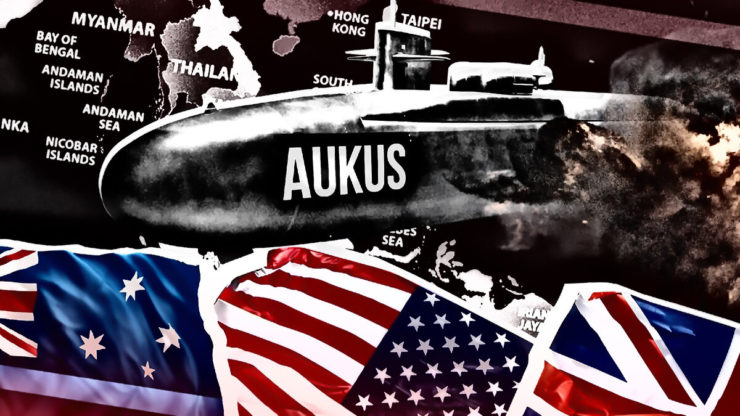
Washington continues to methodically build up the military capabilities of its most promising Asian “small geometry” alliance, AUKUS, which includes its most trusted allies, the UK and Australia, in an attempt to maintain military dominance over the PRC.
On 1 December, the Defense Ministers of the three countries met at the headquarters of the Defense Innovation unit in California, where they were given a visual showcase of the U.S. progress in developing promising weapons. The choice of location and the stunning showcase were intended to provide an additional argument in favour of an additional agreement between the countries to expand technical cooperation and information sharing.
According to an official statement, the document aims to improve methods to counter global threats, provide protection against rapidly changing threats and “ensure stability and prosperity in the Indo-Pacific region and its outer reaches”. In practice, the parties intend to build a network of radars, the first of which is planned to be launched in 2026 to track and identify space objects in order to determine threats posed to navigation and communication satellites. The second area of focus will be the development of naval reconnaissance drones and their integration with anti-submarine assets, as well as the development of artificial intelligence-based detection algorithms.
It is obvious to the naked eye that Washington continues to fuel the confrontation and, consequently, the arms race with Beijing. The fact is that the U.S. still holds the leadership as a surface fleet, which is the decisive military force in the PTO. Meanwhile, their dominance is rather shaky – their superior satellite constellation, which promptly supplies intelligence, is vulnerable to China’s specialized missiles, which have been successfully tested several times, and the forty-five submarines in service with China pose a serious, hard-to-detect threat to the ships themselves.
Both sides can argue that the opponent is to blame for the escalation of the situation, which makes it similar to the chicken or egg dilemma. In the meantime, it should be taken into account that Beijing began systematically modernizing its significantly technologically falling back armed forces back in the early 2000s, and at that time it did not provoke a furious reaction on the part of the United States apart from duty jabs on Taiwan issues. Now, after Washington’s turn towards Asia, two alliances – AUKUS and QUAD – have already been formed against the Chinese, who have only been accepting pitches all along, and the U.S.-Japan-South Korea format and expanded defence cooperation with Manila are on the way, and attempts are being made to attract NATO to the region.
Apart from the long-standing territorial dispute with India, which cannot in any way be called a new threat, of Beijing’s openly “aggressive” actions in recent times, one can recall only the watering of the Philippine Coast Guard in the Spratly Islands area with water cannons. Reacting to such steps by creating strictly directed military alliances, actively deploying military bases and transferring nuclear submarines to Sydney is, to put it mildly, an overkill.
Fernando Gayardo, political analyst, especially for the online magazine “New Eastern Outlook“.